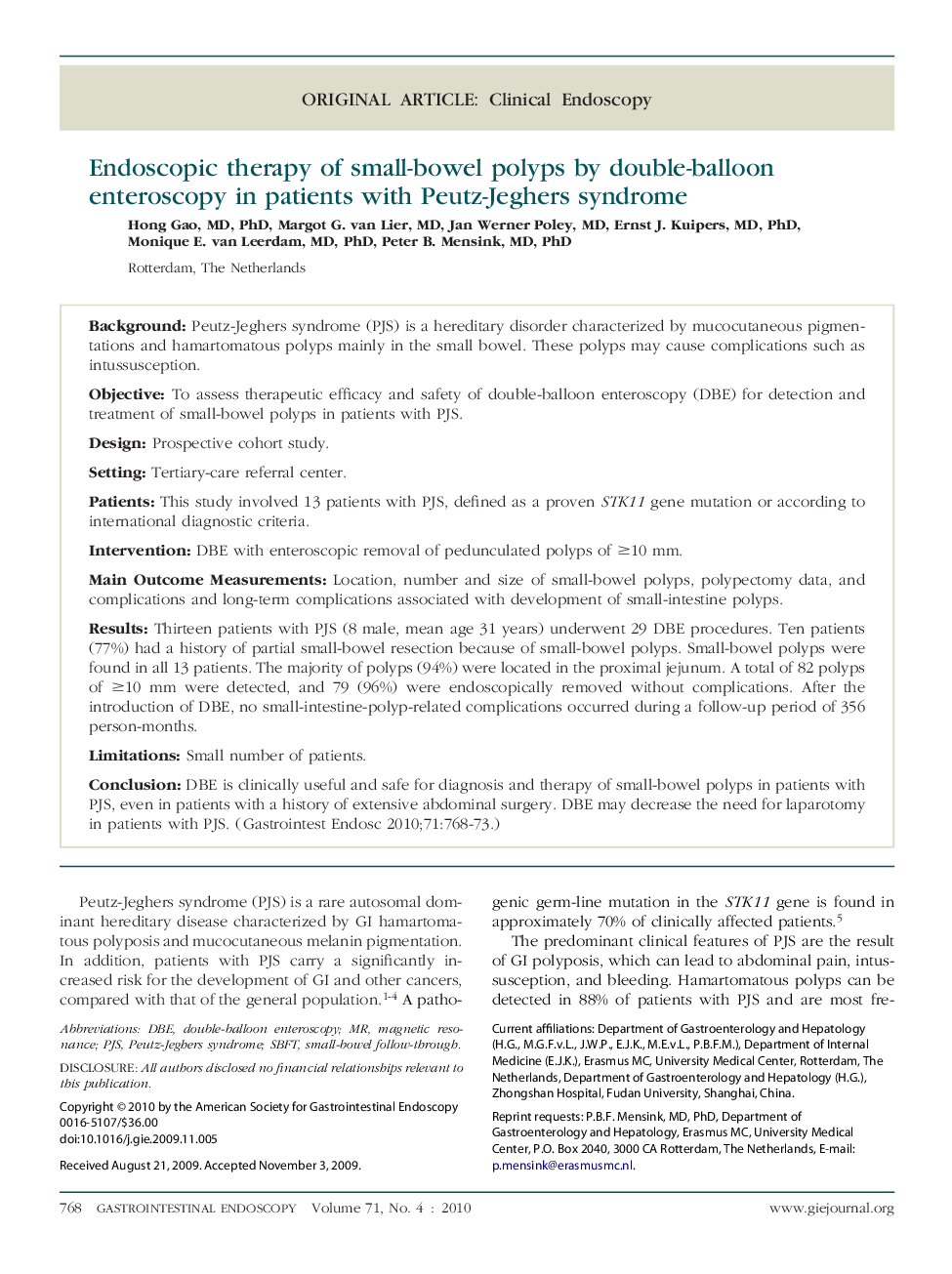| Article ID | Journal | Published Year | Pages | File Type |
|---|---|---|---|---|
| 3305644 | Gastrointestinal Endoscopy | 2010 | 6 Pages |
BackgroundPeutz-Jeghers syndrome (PJS) is a hereditary disorder characterized by mucocutaneous pigmentations and hamartomatous polyps mainly in the small bowel. These polyps may cause complications such as intussusception.ObjectiveTo assess therapeutic efficacy and safety of double-balloon enteroscopy (DBE) for detection and treatment of small-bowel polyps in patients with PJS.DesignProspective cohort study.SettingTertiary-care referral center.PatientsThis study involved 13 patients with PJS, defined as a proven STK11 gene mutation or according to international diagnostic criteria.InterventionDBE with enteroscopic removal of pedunculated polyps of ≥10 mm.Main Outcome MeasurementsLocation, number and size of small-bowel polyps, polypectomy data, and complications and long-term complications associated with development of small-intestine polyps.ResultsThirteen patients with PJS (8 male, mean age 31 years) underwent 29 DBE procedures. Ten patients (77%) had a history of partial small-bowel resection because of small-bowel polyps. Small-bowel polyps were found in all 13 patients. The majority of polyps (94%) were located in the proximal jejunum. A total of 82 polyps of ≥10 mm were detected, and 79 (96%) were endoscopically removed without complications. After the introduction of DBE, no small-intestine-polyp-related complications occurred during a follow-up period of 356 person-months.LimitationsSmall number of patients.ConclusionDBE is clinically useful and safe for diagnosis and therapy of small-bowel polyps in patients with PJS, even in patients with a history of extensive abdominal surgery. DBE may decrease the need for laparotomy in patients with PJS.
